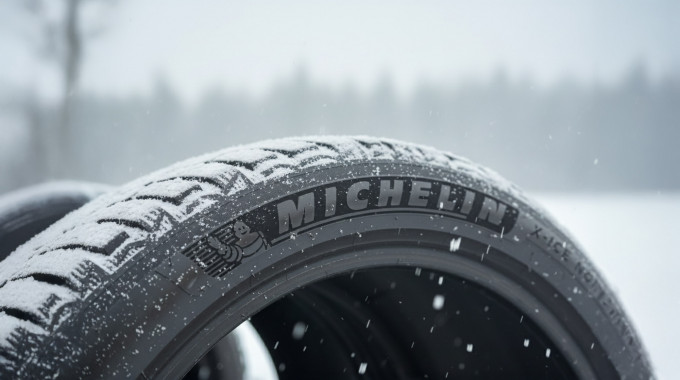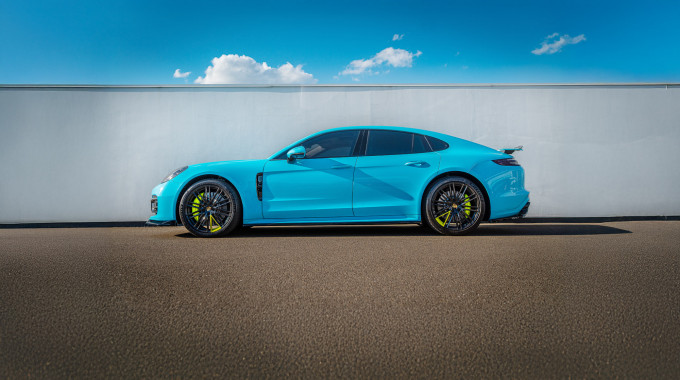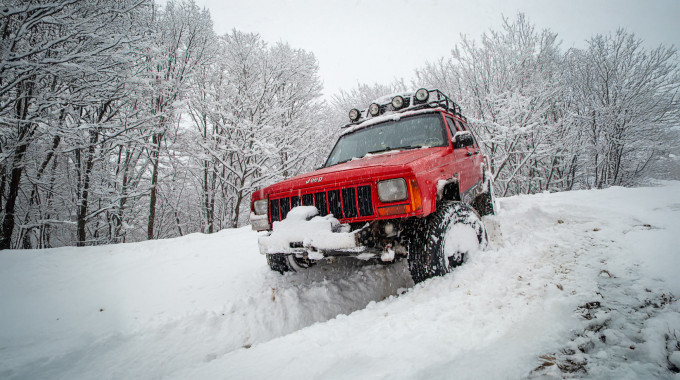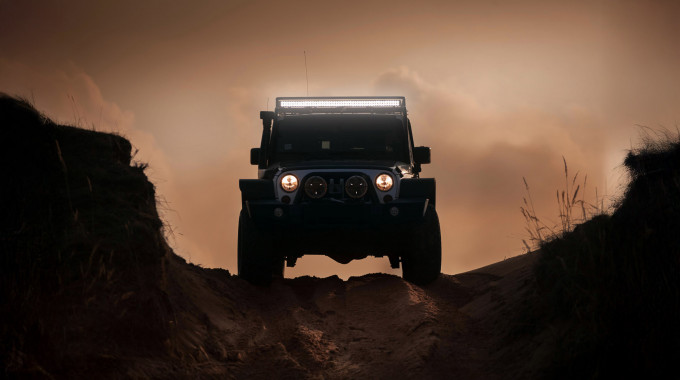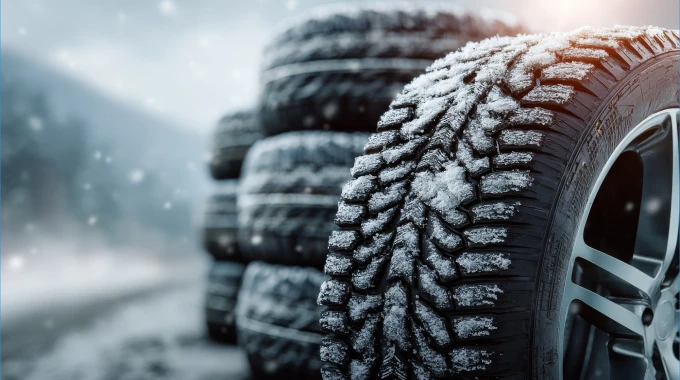
Toyota’s SUV Lineup: All 8 Models Previewed
The Toyota SUV and crossover lineup has been going strong for decades – from subcompact to full-size. Here, we preview all 8 models currently available, highlighting some key specs and features for each.
Considering an elecrtric Toyota SUV? Here's our preview of Toyota's entire EV sport utility lineup.
C-HR

Photo: Toyota
- Available engine: 2.0L
- Performance: 144 horsepower
- Cargo space: Up to 1,031 litres/36.4 cu. ft. (with rear seats folded)
- Number of passengers: 5
The exterior design of Toyota’s compact C-HR, with its head-turning curb appeal, makes an attractive option for the value-driven SUV consumer. Base models start at $24,150 MSRP, which seems like a great deal considering the C-HR boasts all the latest connectivity options like Apple CarPlay and Android Auto, plus Toyota Safety Sense 2.0 – featuring advanced active-safety technologies and capabilities.
Where the C-HR loses points is its engine performance. It only offers one powertrain – a 144 horsepower, 2.0L variable transmission engine that nobody would describe as zippy; not to mention its acceleration that some will surely find lacking. However, the C-HR is competitive with its peers when it comes to fuel efficiency, rating at 8.7L per 100 kilometres in the city and 7.5L per 100 kilometres on the highway.
Corolla Cross

Photo: Toyota
- Available engine: 2.0L
- Performance: 169 horsepower
- Cargo space: 750 litres/26.5 cu. ft.
- Number of passengers: 5
You would be forgiven for thinking Toyota’s Corolla Cross is a sibling SUV to the massively popular Corolla sedan. Truthfully there isn’t much resemblance from the exterior point of view. The Corolla Cross is Toyota’s newest crossover utility, and in terms of size, it slots right between the compact C-HR and RAV4.
For those looking for more space than what a Corolla sedan offers, the Corolla Cross can open up an extra 440 litres of cargo space with the split-fold rear seats adjusted. Performance is slightly better than the C-HR with a 169 horsepower, 2.0L engine, and a hybrid version coming in 2023.
All models come with front-wheel drive, but adventurers can opt for an all-wheel drive version at a higher price point. The top-line XLE trim offers a 10-way power-adjustable driver’s seat and dual-zone automatic climate control. Corolla drivers will feel at home in the cabin, as the dash is nearly identical to the sedan version.
Here’s our full 2022 Toyota Corolla Cross first drive review.
RAV4

Photo: Toyota
- Available engine: 2.5L
- Performance: 203 horsepower
- Cargo space: Up to 1,977 litres/69.8 cu. ft. (with rear seats folded)
- Number of passengers: 5
There’s a lot of history in the Toyota RAV4. Introduced in the mid-90s, the RAV4 is considered the first crossover compact SUV. It has seen many permutations since then. The 2022 model, the fifth generation, is available in a 2.5L, 4-cylinder powertrain or a hybrid version. Front-wheel drive is standard, but all-wheel drive is available on some trims.
If off-highway excursions are part of your lifestyle, the RAV4 is available in the Trail version with a more aggressive grille, large over fenders, fog lights, and a unique wheel design. All trims come with standard driver assist features, including adaptive cruise control. For those looking for a little luxury, trims such as the XLE Premium will get you faux-leather upholstery, heated seats, and an immersive JBL stereo experience.
RAV4 Prime

Photo: Toyota
- Available engine: 2.5L
- Performance: 302 horsepower
- Cargo space: 816 litres/28.8 cu. ft.
- Number of passengers: 5
Since Toyota’s RAV4 is the one of the best-selling SUV crossovers in North America, the hybrid version, the RAV4 Prime, will expectedly piggyback on that popularity. Unfortunately, Toyota is currently warning that it “has very limited availability,” so it could be a challenge finding RAV4 Prime inventory in the near future.
Its features include up to 68 kilometres in range when in electric mode, intelligent all-wheel drive, and a 302-horsepower, 2.5L engine on the standard edition. The same trim gets you an 8” display screen, 6 speakers, and 5 USB slots, while XSE editions offer a 9” display and Audio Plus featuring Remote Connect, Safety Connect, and Service Connect.
In terms of cargo space, you’re getting 28.8 cubic feet with the seats up. No need to plug in; this hybrid can recharge itself while on the go, though a socket charge will extend your range.
Venza

Photo: Toyota
- Available engine: 2.5L
- Performance: Up to 219 horsepower
- Cargo space: Up to 816 litres/28.8 cu. ft.
- Number of passengers: 5
Toyota’s Venza takes the hybrid powertrain technology of the RAV4 Prime and marries it with a more spacious interior and upscale stylings. At least that’s what’s meant to justify the starting $38,890 MSRP price tag. This mid-size SUV crossover is a bit of an outlier for Toyota, which isn’t known for being in the luxury space, but the Venza could be mistaken for a Lexus.
It features elegant exterior lines and a tapered roofline. There are also projector-style LED headlamps, LED fog lights, and a full-width rear LED light bar that “leaves an impression,” according to Toyota. This is a vehicle with urban curbside appeal, although its StarGaze panoramic roof (with frost control) would be ideal for clear evening drives in the woods.
The interior has a premium touch with Softex seats and ambient cabin lighting, while a 12.3” split-screen multimedia display is available on the Limited trim.
Highlander

Photo: Toyota
- Available engine: 3.5L (gas) or 2.5L (hybrid)
- Performance: 295 horsepower
- Cargo capacity: 453 litres/16 cu. ft.
- Number of passengers: Up to 8
When it comes to the three-row mid-size SUV, the category wouldn’t be where it is without the Toyota Highlander. It first came to market way back in 2001, and it has since trail blazed a path for other family-friendly crossovers. Currently in its fifth generation, the 2022 version offers a standard 3.5L, V-6 engine or a hybrid version with a 2.5L, 4-cyclinder for better fuel economy rating.
The hybrid model, which is available in four different trims, is self-charging using regenerative braking to recapture energy. The fuel version also makes efforts to be green, like a start-stop engine that automatically shuts off at full stops to save fuel and reduce emissions.
The big draw for the Highlander is space, including 7- or 8-person seating and ample cargo space with the second and third rows folded down. You can also do a 60-40 split on the second row for more storage versatility.
Shopping for an older model? Read our Guide to Buying a Used Toyota Highlander [2008-2019].
4Runner

Photo: Toyota
- Available engine: 4.0L
- Performance: 270 horsepower
- Cargo space: 1,337 litres/47.2 cu. ft.
- Number of passengers: Up to 7
It’s hard to believe the Toyota 4Runner has been one of the longest-selling vehicles not only in company history, but of all vehicles ever. It was first introduced in 1984 as basically a pick-up with a canopy. Today’s generation of the 4Runner is a rugged, mid-size SUV that stands out as one of the most off-road-ready options in Toyota’s portfolio.
The 2022 model combines heavy-duty body-on-frame construction with a powerful 4.0L, V-6 engine. Its fuel efficiency rating – 14.8L per 100 kilometres in the city and 12.5L per 100 kilometres on highway – is nothing to write home about, but the towing capacity of up to 5,000 pounds is more than sufficient.
New to 2022 is LED headlights, high beams, and fog lamps. The 8” infotainment screen, however, looks miniscule compared to other displays available in the Toyota lineup. This is clearly a vehicle built for trails rather than in-car entertainment.
Sequoia

Photo: Toyota
- Available engine: 5.7L
- Performance: 381 horsepower
- Cargo space: Up to 3,401 litres/120.1 cu. ft. (with rear seats folded)
- Number of passengers: Up to 8
Size, space, and power are hallmarks of the Toyota Sequoia, a full-size SUV built for family haulers with a weekend warrior mentality. With the back rows folded, the cargo space can reach up to 120 cubic feet, which is practically enough to compete with a U-Haul rental. As for power, the Sequoia remains unchanged since 2008 with a 5.7L, V-8 with a 381 horsepower engine.
That comes with a price at the pumps. The fuel rating is not exactly “eco,” with 18.5L per 100 kilometres in the city and 13.9L per 100 kilometres on highway. There is currently no hybrid option available, though the Sequoia will get a refresh in 2023 with a plug-in option. The towing capacity hits up to 7,100 pounds (3,221 kilograms), which is enough to pull anything from an Airstream to a boat, while the Toyota Safety Sense (TSS-P) features include pre-collision detection technology.
If you are considering purchasing a Toyota, we recommend getting pre-approved first! With a pre-approval, you can shop with confidence knowing exactly what you can afford. Get pre-approved online in under 3 minutes. Any credit accepted!



